Last year, our club turned 100 years old! For the occasion, we celebrated with a special jubilee callsign, a banquet, and of course, historical articles written for the NRRL magazine, “Amatør Radio”. As the year concluded, we thought it would be nice to lift the “embargo” and share the articles publicly on our website as well. The articles were originally written in Norwegian so hopefully the English is not too broken. This is a series of 6 articles, as well as one bonus article, so hope you enjoy!
Introduction: This year the radio club in Norway with the oldest club license, “Akademisk Radioklubb”, LA1K, turns 100 years old. This is the first part in a series of articles covering the club’s history. Today we start at the very beginning, where ARK worked together with other radio enthusiasts in the country to get a transmitter license in place.
“Akademisk Radioklubb” (ARK, “Academic Radio Club”) was founded in 1923 by a group of electronics students from Norway’s Technical University (NTH, today NTNU). The club received the call sign LA1K in 1926, and was on the air by 1927, after building a radio transmitter during a late night workshop. As one of the first licensed radio clubs in Norway, ARK was instrumental in it’s contributions to creating the transmitter license, which today is an important part of what constitutes the amateur radio hobby.
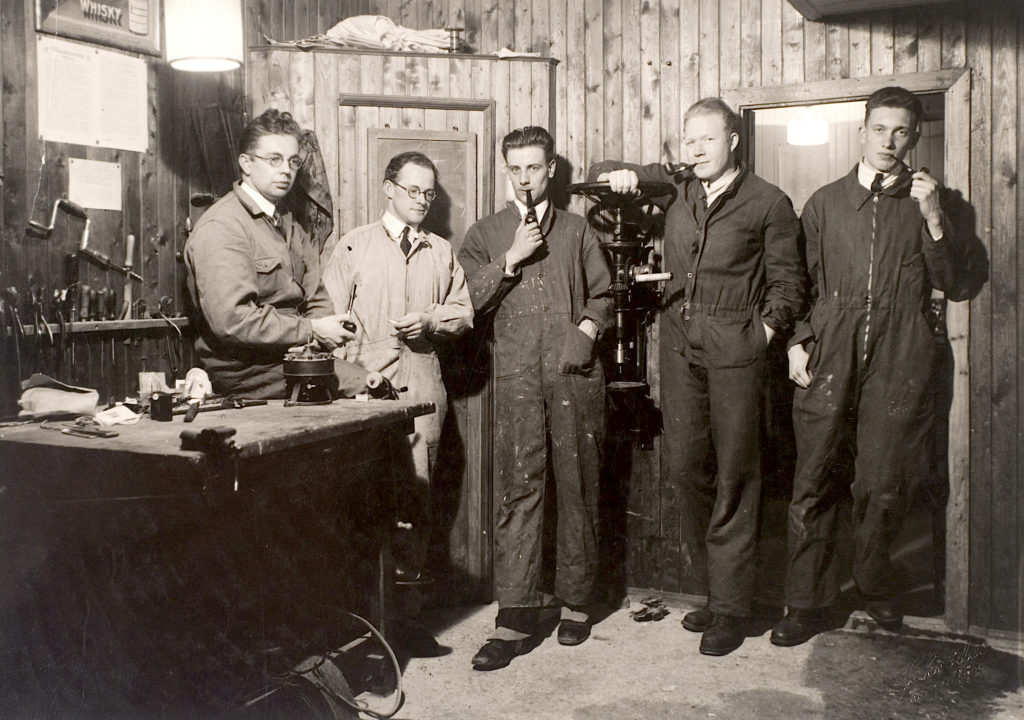
Original image caption: 80% pipes, and 20% cigarettes
From the left: Karsten Lagset, Ralph Eide (SIMRAD), Oddvar Johannesen,
Eilif Bjørnstad (E.B.) and Anders Gohn
ARK and NRF
At the beginning of the 1920’s, there was a great interest in radio in the country, and there were more and more “radio amateurs”; i.e. people who built their own receivers and listened to broadcasts from abroad. “Norsk Radio Klub” (“Norwegian Radio Club”, not affiliated with the public broadcaster, “NRK”), the first club to represent Norwegians interested in radio, was early on concerned with various questions in connection with the introduction of radio broadcasting in the country. With this in mind, and other issues including license fees, it was proposed to form a federation to represent radio amateurs in Norway
“Norsk Radio Forbund” (NRF, “Norwegian Radio Association”) was therefore established in 1924 with Eng. Bødtker as president and with ARK’s then chairman, Torleif Dovland, as one of the board members. In its first year, NRF started work to get clarity on the transmitter case, which involved negotiations with the Telegraph Board and the Ministry of Trade. ARK was particularly interested in this and took the initiative in discussing transmitter permit, representing on the behalf of the Tromsø and Rjukan group, who among others, supported this.
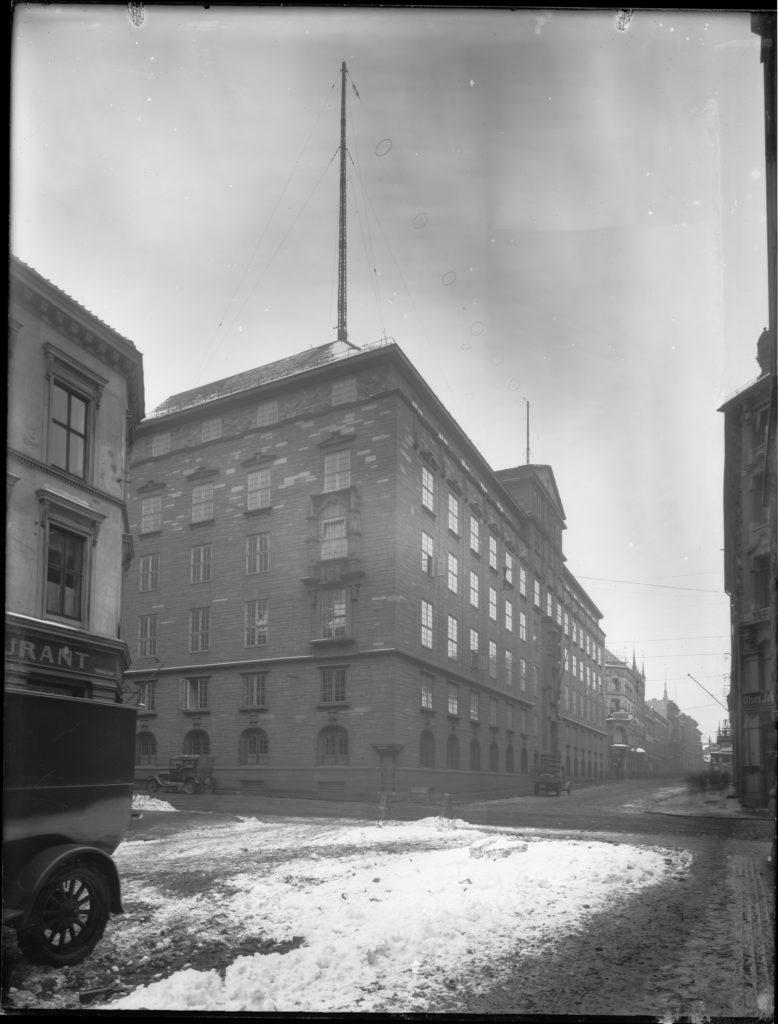
Source: Nasjonalbiblioteket
On 3 October 1924, the Ministry of Trade was authorized to grant broadcasting licenses, which led to “Kringkastingsselskapet AS” (“The Broadcasting Company”) beginning it’s operations on December 15th, 1924. Founded just weeks prior to Christiania changing it’s name to Oslo, it was the country’s first radio broadcaster. The company had its constituent general assembly on March 12th, 1925, where ARK subscribed for one share of NOK 50. In 1933, broadcasting in Norway was nationalised, and the company was thus incorporated into “Norsk Rikskringkasting” (“Norwegian Broadcasting Corporation”, NRK). ARK later sold its share, following a strongly worded letter, sent from NRK sometime in the 1950s.
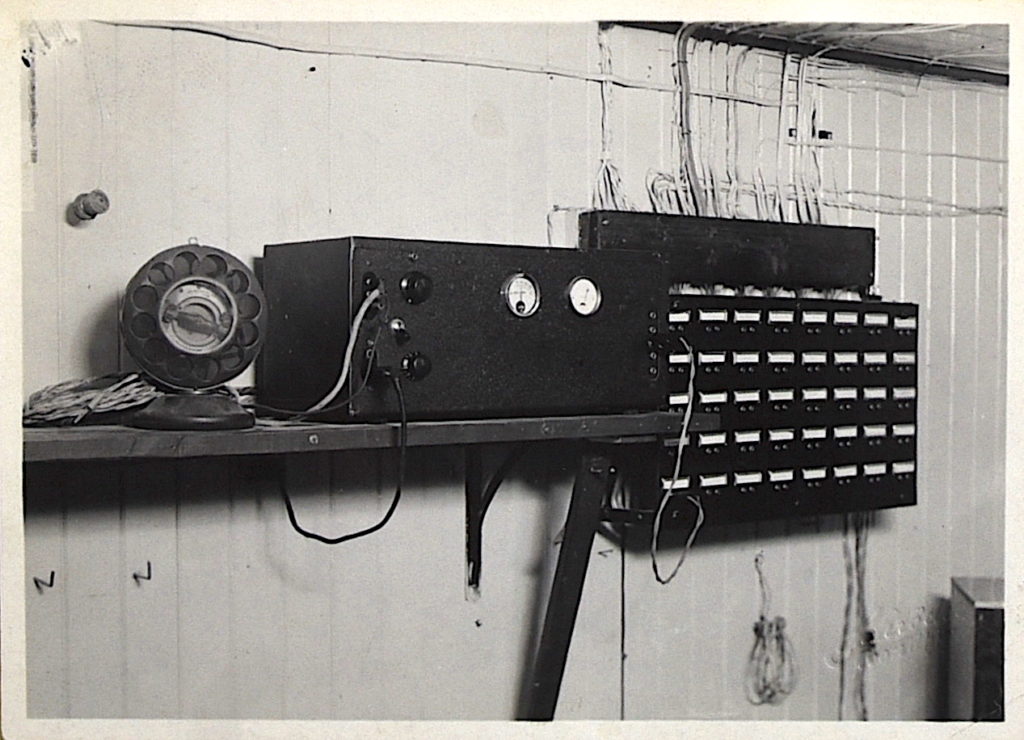
Western Electric push-pull carbon microphone, a gift from Kringkastingsselskapet,
note by Kay Woeden (?) 3-12-70″
ARK receives the transmitter license “LA1K”
In the beginning, the radio amateurs in the club mostly listened to the bands as radio broadcasting was largely reserved for other radio amateurs around the world. This was due to Norway’s strict ban on building and using radio transmitters in the country. ARK itself had a great interest in participating on the 2-way radio and could no longer accept that Norwegian amateurs were not allowed to take part in this developing technology. On May 16th, 1924, the club sent letters to all of the country’s radio clubs, asking them to join a joint application in order to be able to stand stronger against the authorities. With this initiative, the club hoped to gather forces because it was considered unlikely that one actor alone could obtain a license to build and operate radio transmitters.
The proposal attracted a lot of positive interest, and the result was that on November 8th, 1924 a letter was received stating that a license would be issued only to particularly qualified applicants. After a month of assessing relevant candidates, it was decided that ARK thought it met the requirements and the club submitted the following application for a license on December 16th, 1924. But, after a long processing time, and with subsequent reminders to the Telegraph Board, the club received notice in April 1925 that the case was still pending, as the conditions surrounding the said license were not yet set.
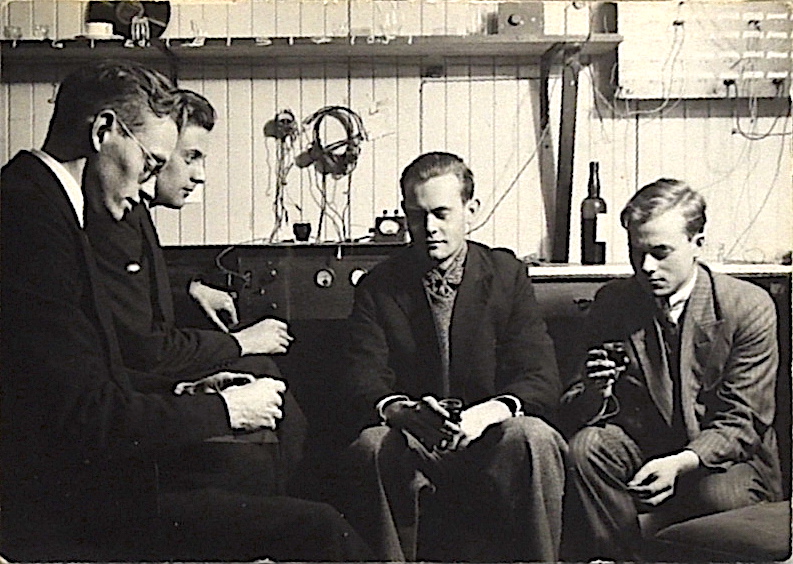
Photo only lists two names, Edvardsen and Østby (FK President)
“The Amplifier Committee”, FK, was split out of ARK in 1945 by the admins at the Student Society
FK got to keep ARK’s old premises, which gave ARK it’s new loft, which we are still located today
On March 4th, 1926, the preliminary conditions for a transmitter license came and ARK quickly expressed a desire to expand the wave areas to also cover 14.5 to 17.5 meters. The club was unfortunately met with disappointing responses from the NRF. The association believed that the Telegraph Board’s proposal was the best and that the desire for an additional wave area could lead to even further delay in the matter. Incidentally, ARK also believed that the requirements for Morse code were too high; where NRF wanted 12 words per minute, ARK believed that 8 words was good enough and basically an achievable goal. On March 20th, the long-awaited conditions for the transmitter license arrived and all of the proposals for the NRF had been accepted. Below is a small excerpt:
- Maximum 20W
- Antenna length 45 metres
- Operators had to be able to send using Morse code, and receive by ear 40 characters per minute.
- The following frequency range applied:
| 3 – 6 meters | 100.000 – 50.000 kilocycles |
| 29 – 35 meters | 10.340 – 8.570 kilocycles |
| 43 – 47 meters | 7.000 – 6.380 kilocycles |
| 69 – 75 meters | 4.350 – 4.000 kilocycles |
| 100 – 120 meters | 3.000 – 2.500 kilocycles |
With the requirements in place, the club therefore sent its application for a license on April 16th. Ten days later on April 26th, 1926, after a long process, ARK finally received the signature LA1K, the third call sign ever issued in Norway. Why this one and not “C” which is the third letter? Legend has it that “LA1K” was desired, as the “K” stood for “Klubb”, as in the name of the club itself.
LA1K on the air and “Trondheim’s Provisional Broadcaster”
Although the club had finally received the long-awaited transmitter license, we were still without a permanent transmitter. The two years we had spent getting a license meant that the most eager members were soon to graduate. New forces were therefore needed to create our first transmitter. It was only during a group meeting in February of 1927, that our first transmitter was built. After contact with an Austrian amateur the same evening, the transmitter was dismantled.
Before that time, however, there was a larger project that the club took part in. ARK had learned that the NRF had announced a radio exhibition in September 1925 in Oslo, and concluded that Trondheim was as much of a radio city as the capital. The project was then started, with one of its main aims to speed up the issue of a separate broadcasting station in the city. The potential to make some money in the club’s coffers was also not insignificant.
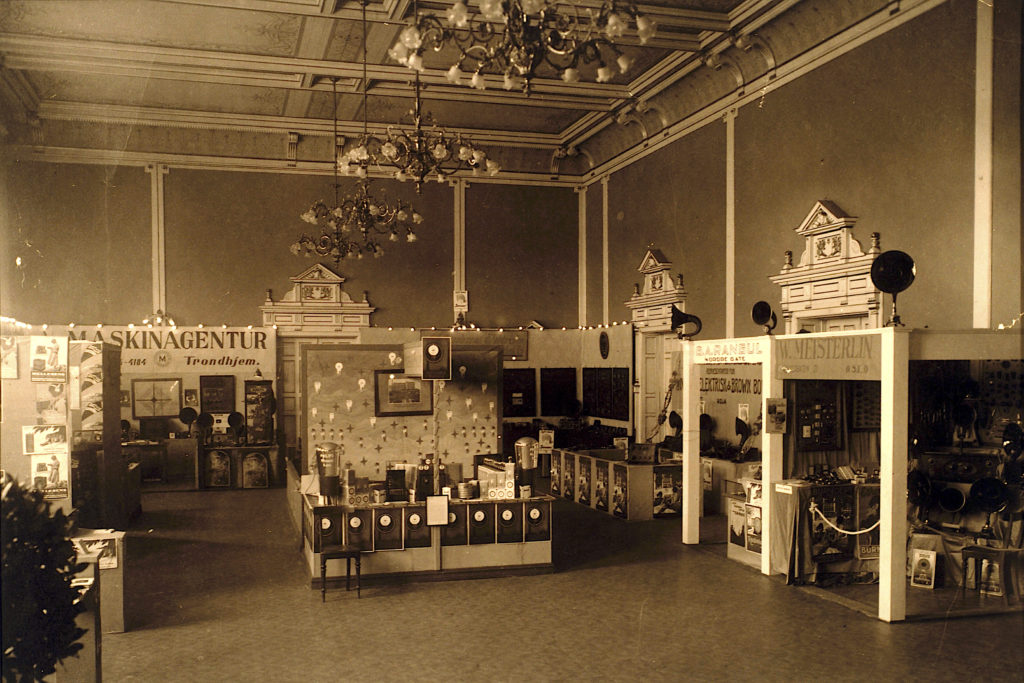
The idea of such an exhibition was well received by the city’s radio dealers and an exhibition committee was therefore set up to plan the big event. The interest in the fair was great, the exhibition spaces were quickly taken away, but – the attempts to borrow a transmitter never came to fruition and the plans to obtain a broadcast therefore failed. One of the big draws in Oslo had been precisely that the public could hear a broadcast carried out during the exhibition itself. The club now realized that the only way this could happen was if they built the transmitter themselves.
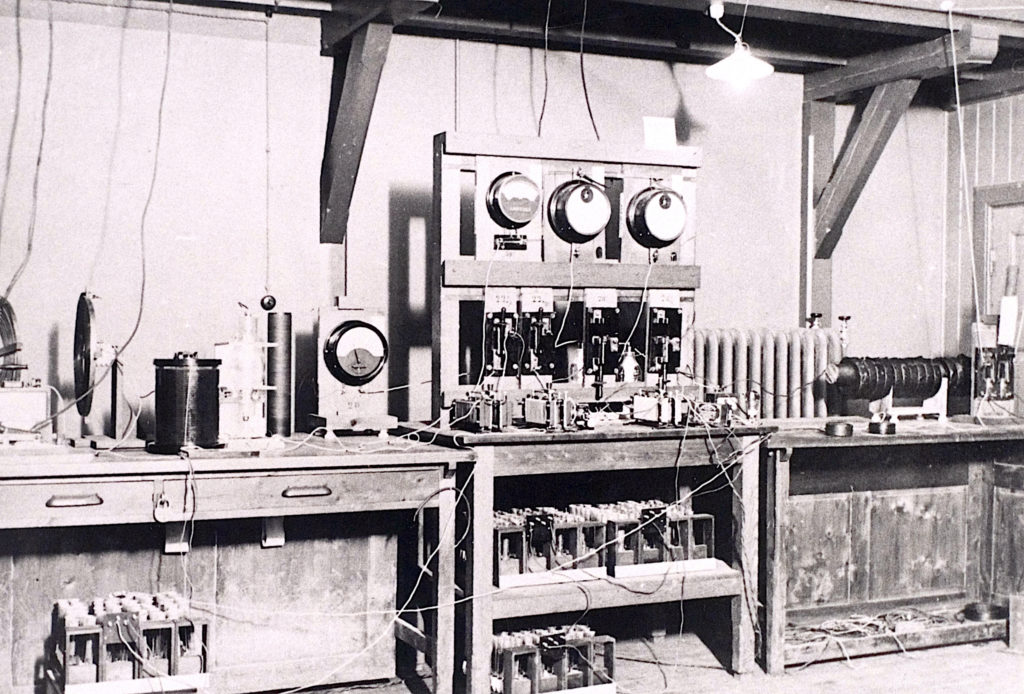
The project was dubbed “Trondhjem’s provisional broadcaster”, and was a success for the radio exhibition beyond all expectations, for which the club received a lot of praise. Financially speaking, the exhibition was also a success, from which ARK got to share the profit of NOK 1,000 with the other dealers who exhibited their receivers.
Relocation to the Student Society
In its infancy, ARK did not have access to any permanent premises and started its group evenings in an auditorium borrowed from the university. In search of a venue, the club was eventually given access to install itself in a number of small experimental houses, built by the School’s Architecture Department. These became room for up to several transmitters that were built at the beginning of the club’s history.

In the autumn of 1929, the new venue for the Student Society in Trondheim was complete, and a six-year troubled existence for the club came to an end. ARK was early out in securing space for the club, and was given two rooms at the new “House”. One of the club’s primary tasks for the Student Society eventually became operating the public address system, which was mostly built by the club itself.
The Trøndelag Group of NRRL
ARK was one of 26 interested parties who formed NRRL in 1928, and eventually it was decided to try to create a local group in NRRL.
In the autumn of 1939, ARK, along with two other radio groups in Trondheim, took the initiative to form a Trøndelag group of NRRL. The two other groups involved were NASU, the “Norwegian Amateur Sender Union” and the “Workers’ Shortwave Group”. At a meeting in the “Kongsberg room” on September 15th, 1939, the group was formed, with the associated election of a board. It was the first successful attempt to form a group, after a number of previous unsuccessful proposals. ARK never joined the group, but was connected through a board member.
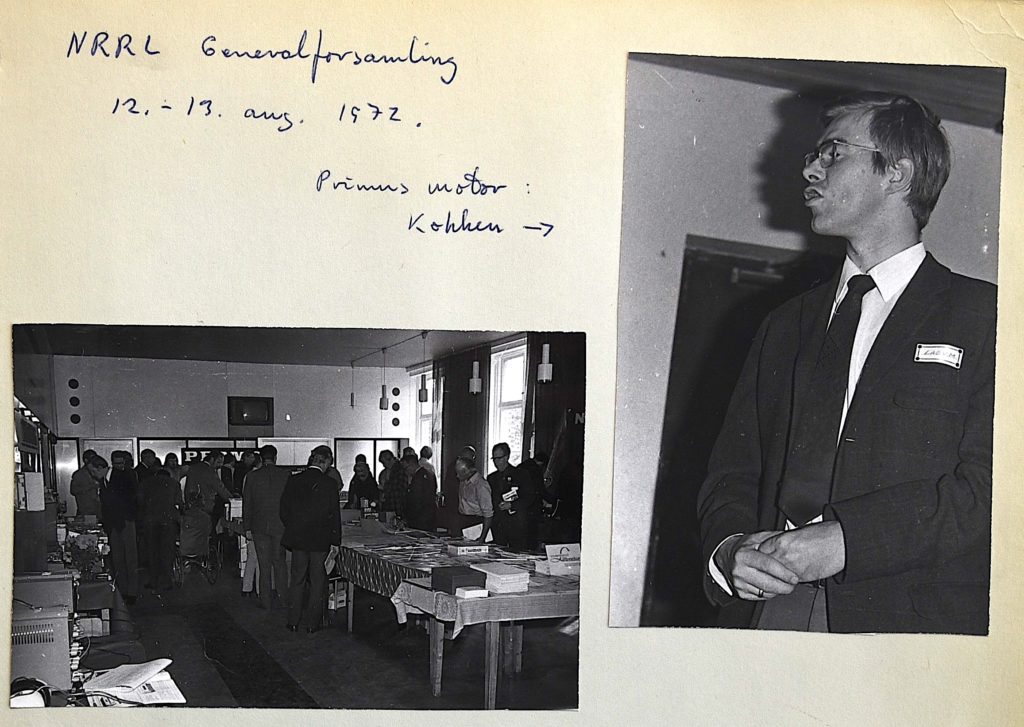
QST-LA
QST-LA was originally started as a weekly information broadcast run by LA1C (NRRL’s license) and LA1K with permission from the Telecommunications Company. In this broadcast, the latest relevant news from the executive board of NRRL and other amateur radio groups’ activities were read out loud. In the first instance, LA1K functioned as a relay station for the broadcasts from LA1C on the 80 meter band – these were then retransmitted on 40m so that the radio amateurs who were in the north of the country could also receive the bulletin.
Despite the commitment to the broadcasts, the listenership was not necessarily as large as at LA1C. The geographical spread to the north, as well as changing and sometimes unpredictable conditions meant that the signals did not reach as large of an audience. The broadcasts, on the other hand, gave the club some attention, so it was rarely a problem to find operators for the broadcast – although it was sometimes annoying to have to interrupt radio contests when the conditions were particularly good.

From the left: LA3JJ, LA1EE, LA1SL and LA1HL
QST-LA, on the other hand, is just as relevant and continues to this day, but is operated by other radio amateurs and groups as the years have passed.
Featured image details:
Caption: “UKA-preparations 1935” (bi-annual student festival)
Subcaption on the back: Image belongs to F.I. Willoch, 5010 Bergen (whups)
From the left:
– F.I. Willoch
– Per Øfsdal (Club President)
– Bård Benum
– Anders Pedersen
– Hans Dahl-Paulsen
– Cato Seeberg
– Kåre Østby
– Kalle Vibstad
– Heidi LB9WI, Kristoffer LB0VG and Sondre LB5PI
Article first published in “Amatør Radio”, February 2023
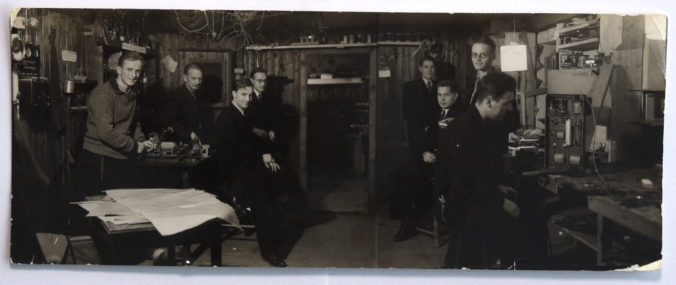

Leave a Reply